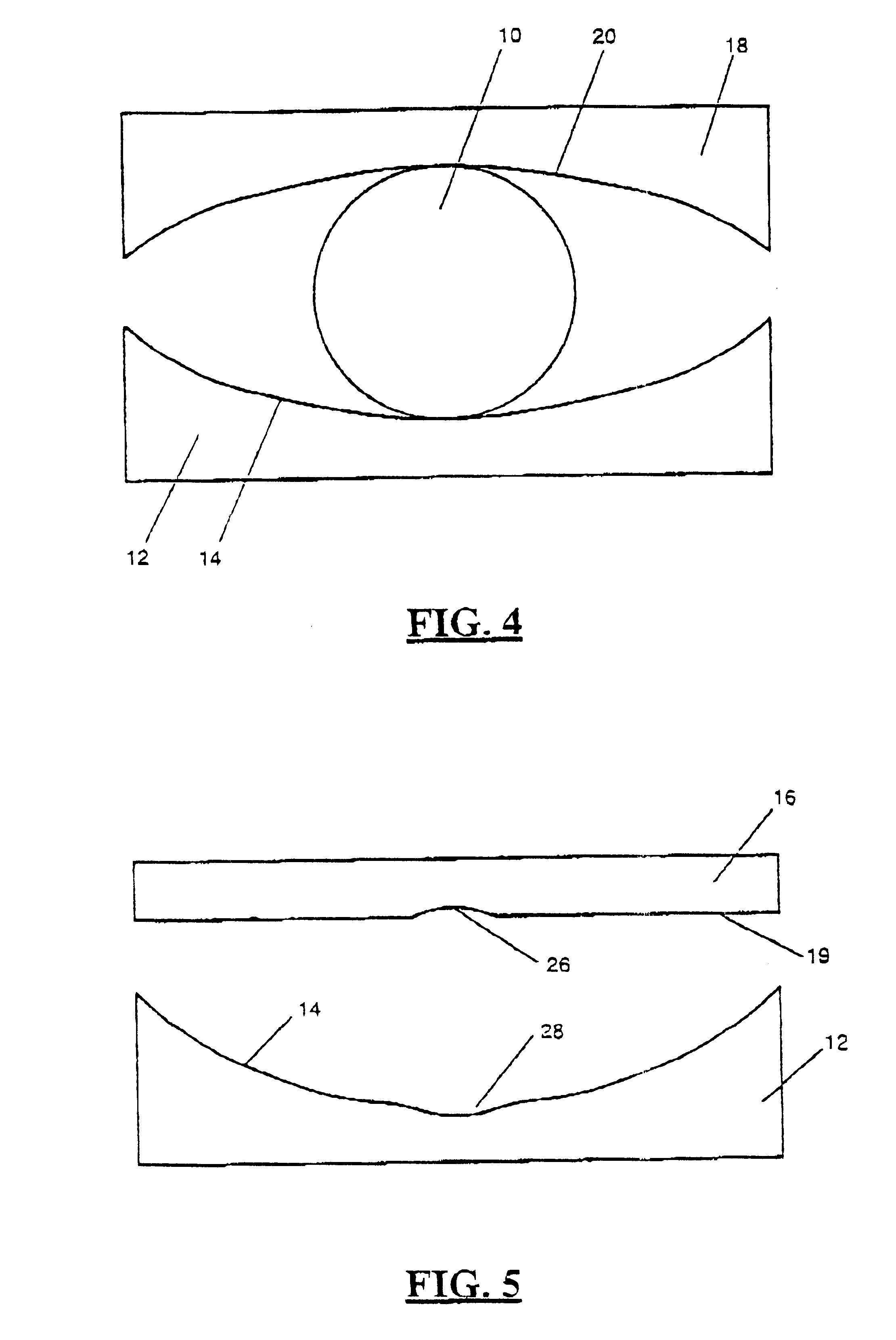Energy absorber
a technology of energy absorber and absorber, which is applied in the direction of vibration dampers, protective foundations, building components, etc., can solve the problem of taking a considerable amount of time for the structure to come to rest, and achieve the effect of high coefficient of friction
- Summary
- Abstract
- Description
- Claims
- Application Information
AI Technical Summary
Benefits of technology
Problems solved by technology
Method used
Image
Examples
Embodiment Construction
One of the practical impediments to inserting bearings under smaller structures to isolate them seismically is the need to allow for sufficient travel of the structure in relation to the foundation so that damping can take place. In FIG. 1 there is illustrated a lower seat 12 with a curved upper surface 14 upon which a ball 10 rests. For the purposes of this illustration ball 10 is not deformed, whereas in the embodiment according to the invention ball 10 is deformed. A structure 16 or a portion of a structure 16 rests on top of ball 10. As structure 16 is moved from left to right to the position shown in ghost in FIG. 1, ball 10 moves to the position 10a up the curve of surface 14 of radius R. Because each of the top and bottom of ball 10 is in contact with a surface the net effect on member 16 is that it will have moved horizontally a distance 2.DELTA.x as illustrated at the same time that ball 10a has moved horizontally a distance .DELTA.x and vertically a distance .DELTA.y. The ...
PUM
 Login to View More
Login to View More Abstract
Description
Claims
Application Information
 Login to View More
Login to View More - R&D
- Intellectual Property
- Life Sciences
- Materials
- Tech Scout
- Unparalleled Data Quality
- Higher Quality Content
- 60% Fewer Hallucinations
Browse by: Latest US Patents, China's latest patents, Technical Efficacy Thesaurus, Application Domain, Technology Topic, Popular Technical Reports.
© 2025 PatSnap. All rights reserved.Legal|Privacy policy|Modern Slavery Act Transparency Statement|Sitemap|About US| Contact US: help@patsnap.com



